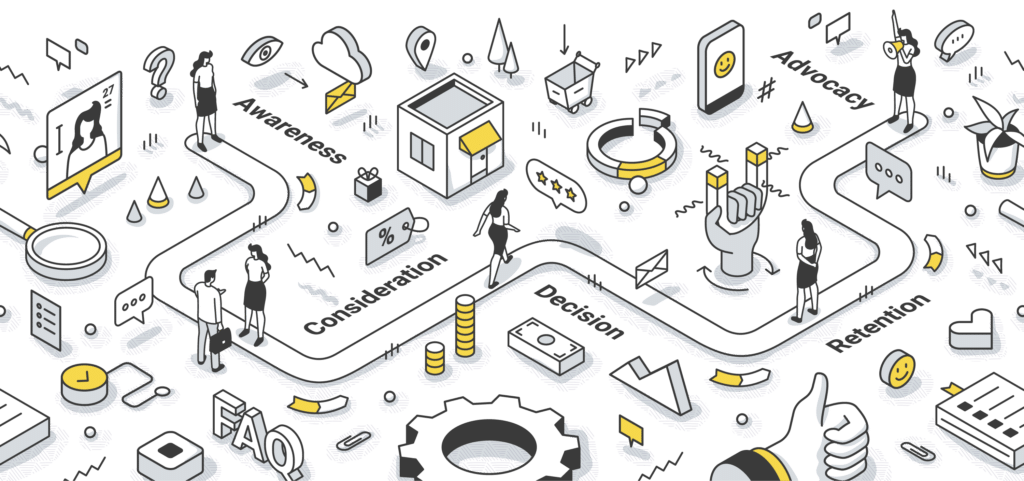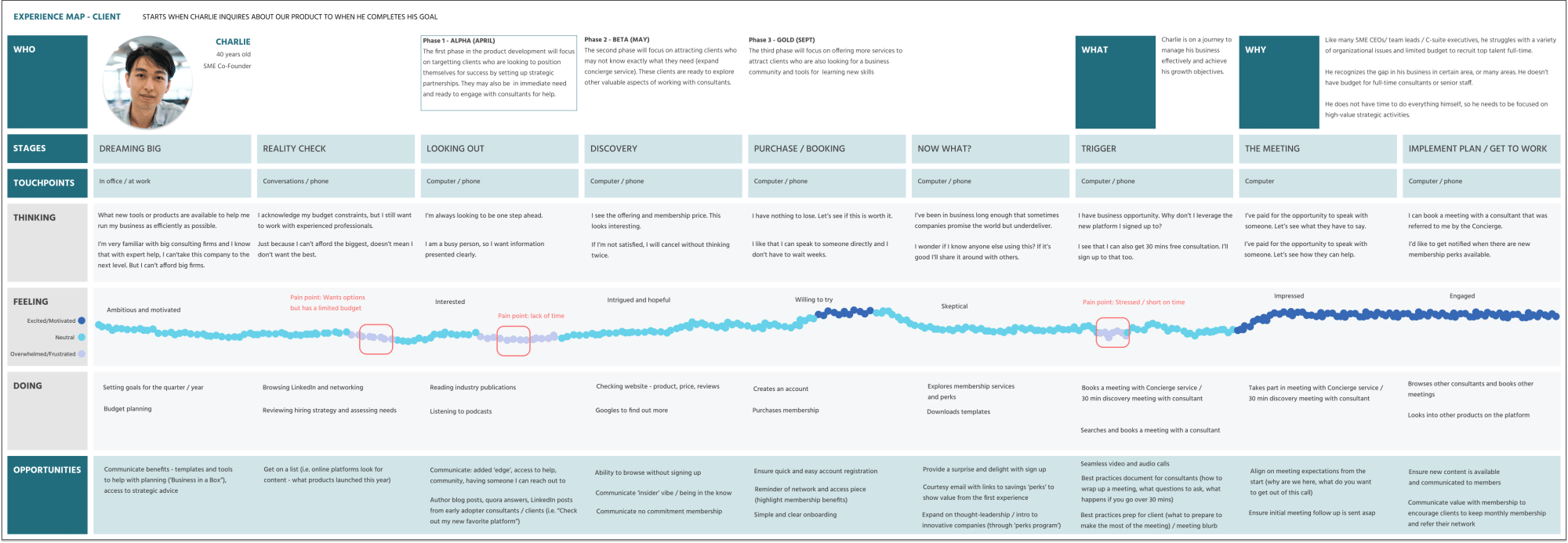
Understanding your target audience is the key to growing your business and keeping it successful. Aside from their basic demographic information, you also need to find out what their needs and interests are, as well as their decision-making process.
Taking a walk in their shoes is the best way to improve the customer experience that you provide. Of course, this process is often easier said than done.
This is where customer journey mapping comes in. Read on to find out why journey maps are crucial to your marketing strategy and how you can start implementing them to enhance the overall customer experience.
Defining Customer Journey Maps
A customer journey map is a visual representation of the steps your customers take when interacting with your business, whether that interaction is through a product, an online or retail experience, a service, or any combination of these.
Maps become increasingly complex, yet necessary, as you add more touchpoints. A customer journey timeline starts with interacting with the customer (possibly through advertising or in-store interactions), then the customer purchases the product or service, uses it, tells others about their experience (in person or online), and in some cases completes the journey by upgrading, replacing, or choosing a competitor (resuming the journey with another brand or company).
Of course, this doesn’t mean that all of your customers will go through each one of these touchpoints. Customer journey maps differ slightly from one person to another, and each stage’s components depend on your industry and business model.
How Customer Journey Maps Help Improve Customer Experience
Customer journey maps can be extremely useful in a company’s efforts to enhance buying experiences.
Here are three strategies you can implement now to improve the brand experience of your customers:
1. Determine Any Gaps and Drop-Off Points Throughout the Customer Journey
Before you can map the customer journey, you’ll first need to research how your target market moves through your marketing funnel to learn where people may drop out.
Since some of the people your campaigns will reach will not be in your target audience, certain drop-offs are unavoidable. Plus, not all of the people who do fit your target audience will convert. However, if there is a significant decline at a certain point, it means that something is keeping your potential buyers from continuing past that point. With this analysis, you can adjust your focus accordingly.
In the end, no marketing funnel accommodates everyone. But, the better you understand where your clients are leaving, the more you can do to prevent unnecessary drop-offs.

2. Recognize What Is and Isn’t Working
Once you’ve identified the gaps in your customer journey through your customer journey maps, you can then examine the methods and strategies used at each stage in more detail. By doing so, you’ll be able to identify which strategies are most successful at guiding your customers through the sales funnel and which ones still need work.
For example, if customers who visit your website’s testimonial page tend to convert more than those who don’t, you can take this as a sign that the page is a valuable resource for prospective buyers. Given this insight, you can link to this page on your other pages or social media profiles so that visitors can access it earlier in their client journey.
With a better understanding of which strategies convert customers from awareness to advocacy, you can continue implementing the tactics that work and increase your budget for those initiatives. On the other hand, for the ones that don’t work, you can choose to either improve them or eliminate them.
In either case, creating customer journey maps will help you use your resources more wisely, spend less on ineffective strategies, and save time.
3. Incorporate and Improve Personalization
One of the best ways to improve the customer experience and increase retention is to incorporate personalization—and it will be much easier to add customization to their journey if you create reliable customer journey maps.
Maps provide a broad perspective of all the different touchpoints that make up a customer’s experience with your brand and business. This by itself can be useful in highlighting opportunities.
Beyond that, though, maps can identify how needs and interests differ among audience segments. For example, if your product or service appeals to both B2C and B2B customers, B2B buyers might be more interested in integrations and scalability, whereas B2C users are more concerned with price.
With this in mind, you can adjust the content you offer at each stage of the process for both audience segments. Additionally, you could make changes to your loyalty programs, ad placements, content formats, and pretty much everything else you use to increase sales and retention.
The greater your understanding of your audience, the more effective you can be at ensuring that the decisions they make will be advantageous to your company.
Final Word
Customer journey mapping is essential when trying to understand your customers from the outset.
Businesses that don’t map their customer journey have a limited understanding of what their customers go through when doing business with them. They become less attentive to consumer needs and suffer a competitive disadvantage. Plus, as a result of all of this, the rate of customer churn may increase.
So if you want to avoid all of this and continue to improve the customer experience you provide, start customer journey mapping now!
Take advantage of a Personalized Customer Journey Workshop or “walk a mile in their shoes” and develop journey maps for multiple types of groups like, End-Users, Stakeholders, and Target Market.
If you need help conducting customer research, developing a customer experience strategy, or implementing customer retention strategies, find an expert that will guide you through. Cansulta has your back!
